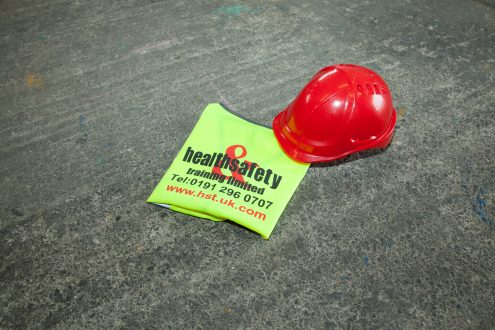The Health and Safety Kit: Electrical Safety
 Electricity is a resource that we rely on for almost every daily task, but often we neglect to recognise its hazardous potential.
Electricity is a resource that we rely on for almost every daily task, but often we neglect to recognise its hazardous potential.
In 2010 alone, 28 people died from electrocution or serious electrical burns from low voltage supplies. In 2011-2012, more than 17,000 were injured by electricity, the majority through cooking appliances and wiring and cabling, although a substantial amount were injured by washing machines, dishwashers and even simply lighting!
The Hazards
Many accidents relating to electricity, including the fatal ones, could have been avoided with proper care, maintenance and expertise. Faulty wiring due to DIY fixes, lack of regular servicing and lack of knowledge are the biggest contributors to electrical accidents, all of which would have been negated if the business or individual has followed regulations. The main hazards to protect against include:
Electric Shock and Burns
Electric shock occurs when any part of the body comes into direct contact with an electrical current. Electricity can travel through clothing, skin, muscles and even hair, so it’s essential that any cabling carrying an electrical current is kept suitably enclosed and isn’t accessed by anyway other that a fully trained electrician.
Electrical burns occur at the entry and exit points of the electrical current on the body – most commonly found on the hands where the current first contacts, and the soles of the feet where the current flows from the body and into the ground.
Fire Caused by Faulty Electrical Appliances or Installations
Faulty electrics, including badly maintained appliances and overloaded sockets cause around 7,000 fires every year because electricity causes the surrounding area to heat up. However, with proper ventilation, this shouldn’t be a problem.
There are many things that can contribute to electrical fires, but you can take simple steps to lessen the risk. Removing plugs by gripping the actual plug and not the wiring will help to prevent the wires from wearing; installing switches that cut off the electricity if it surges; ensure proper ventilation by maintaining space between electrical appliances and of course, don’t leave appliances plugged in while you aren’t around.
Fires Caused by Overloaded Sockets
We all know that you shouldn’t overload electrical sockets, but that doesn’t seem to stop a lot of people as this is one of the most common causes of electrical fires. Even if the equipment you use to extend a plug’s capacity is a legitimate product, it’s essential that you still abide by the maximum use rules.
Usually, an extension lead will have a maximum load of around 3000 watts (13 Amps), although each product is different so it’s always best to check. Once you know the limit of your extension lead, you can check how much power each plugged in appliance is using and ensure you aren’t creating a fire hazard by overloading it.
The Law
In the UK, the Health and Safety at Work etc Act 1974 states that employers are responsible for ensuring their employees, visitors to their premises and members of the public, are kept safe and protected from risk, as far as reasonably practicable. And this includes risks presented by electricity.
HSE Electrical Inspectors work with other responsible bodies, such as the Department for Energy and Climate Change (DECC), to enforce the law and reduce the number of electrical accidents in the workplace by offering advice of the best working practices and helping to develop guidance following technical changes or changes to working procedures.
Your Responsibilities
As an employer, your responsibilities to your staff and their safety are varied and will be dependent on your individual business, your staff and your working practices. This means that every employer’s duties will be different. There are however some steps you can take to provide protection that will apply to everyone.
Risk Assessment
You must begin with an effective risk assessment of all electrical hazards and any electrical equipment you use. This should detail:
- Those vulnerable to harm, or likely to receive injury
- The level of risk
- The precautions you’ve taken to reduce or eliminate risk
Maintenance and PAT Testing
In relation to effective maintenance, it is your duty to ensure all electrical equipment and installations are regularly and professional maintained to reduce risk. This should be done at least often enough to ensure any deterioration is noticed. This includes regular PAT testing and electrical inspections by a competent person.
First Aid
Every employer has a responsibility to provide adequate first aid to their staff should they require it. If, during your risk assessment you find that your employees are at a high risk of electric shock, then your first aid training should reflect this. It’s essential that your first aiders are properly trained to deal with all possible injuries or illnesses, but if the risk of electrical burns or associated injury is high, then find a company that will tailor their training to reflect this.
Available Training
Here at Health and Safety Training Ltd we have a dedicated team of instructors that can advise you on the best training courses that will keep your staff, visitors and customers safe and protected from electrical hazards. This includes Risk Assessment training that allows a responsible person or group to investigate and identify all risks so you can take precautions against them. We can also offer Fire Safety and Awareness training, as well as First Aid at Work training that can be tailored to meet the individual requirements of your business.
So, if you’re concerned that your business isn’t functioning safely and effectively, simply contact us today to find out how we can help.
Company Back in Court for Safety Failings Employment Guidance: Getting the Right Staff





